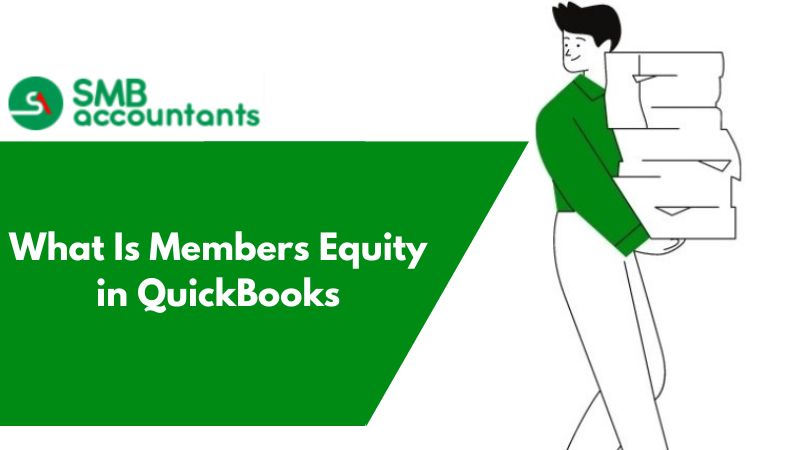Do you wish to get a better understanding of how to classify and record several kinds of distributions in QuickBooks?
Regardless of whether you are handling owner distribution, partner distribution, S Corp distribution, or shareholder distribution, it is important to have a strong understanding of the processes that are included.
In today’s article, we will talk about the step-by-step procedure of setting up distribution accounts, preparing journal entries, and classifying distributions in QuickBooks. By the end of this article, you will have the knowledge and the understanding to record and classify distributions accurately, making sure that your financial records are precise and compliant.
What is an Owner distribution in QuickBooks?
Owner distribution in QuickBooks refers to the assigning of assets or profits to the owner of a particular business enterprise, usually in a recorded and structured manner, to show the financial transactions precisely.
This procedure is essential because it enables owners to get paid a portion of the company's profits. It also acts as a way to monitor and record the money moving from the company to its owners. Businesses can guarantee financial standards are followed and openness is maintained by keeping correct records of owner distributions.
QuickBooks offers several methods to record and classify owner distributions that streamline the procedure and make sure that the financial statements precisely represent the profit distributions to the owners.
How to Classify Owner Distribution in QuickBooks?
Classifying owner distribution comprises arranging and categorizing the assigned assets or profits to precisely represent the financial activities of the business owner in the accounting system.
Setting up Owner Distribution Accounts
In QuickBooks, the process of setting up owner distribution accounts comprises preparing particular ledger entries or accounts to precisely capture and monitor the assigned assets or profits selected for the business owner.
Such accounts are required to be configured with the right names and categories like Owner Distributions or Owner’s Equity to distinguish them from expense accounts or regular accounts. It is important to make sure that the accounts are managed properly in QuickBooks, enabling seamless recording and reconciliation of the particular owner distributions.
Such accounts must be properly managed to precisely reflect the financial position of the business and the stake of the owner in the profits of the company.
Preparing a Journal Entry for Owner Distribution
Registering owner distribution in QuickBooks includes preparing precise and detailed journal entries that show the particular assigning of assets or profits to the owner of a business in the accounting records.
These journal entries are essential for upholding a definite and transparent financial trail, making it possible to precisely track the business owner's portion of assets or profits. Accuracy is essential since any mistake could result in miscommunication or financial differences.
The distribution procedure must be methodically documented, with dates, amounts, and any related clarifications or justifications included. Appropriate documentation facilitates informed decision-making and helps to provide a thorough picture of the company's financial situation. To enable accurate financial reporting and analysis, the ultimate objective is to maintain clarity and precision in the recording of owner distributions.
Classifying Owner Distribution in Transactions
Classifying owner distribution in transactions in QuickBooks includes allocating particular categories or labels to the financial activities concerning the assigning of assets or profits to the owner of the business.
The process of classification holds great importance in precise financial reporting and analysis. Usually, it entails connecting the transactions to accounts, such as equity or drawing accounts. Transaction tagging is a feature of Quickbooks that lets you tag and arrange transactions about owner distributions.
The process of classification has great importance in precise financial reporting and analysis. Usually, it includes connecting the transactions to accounts, such as equity or drawing accounts. Transaction tagging is a feature of QuickBooks that lets you tag and arrange transactions related to owner distributions.
By systematically categorizing owner distributions, businesses can successfully monitor the movement of financial resources and make sure of compliance with tax regulations. Such categorization features in QuickBooks make the process easy and simple, improving the ability to track and handle owner distributions.
How to Record S Corp Distribution in QuickBooks?
Recording S Corp distribution in QuickBooks comprises precisely documenting and showing the assigned assets or profits to the owners or shareholders of the S Corporation in the accounting system.
Ensuring that the financial records appropriately represent the distribution of earnings to shareholders is dependent upon the completion of this process. QuickBooks offers certain tools and capabilities for handling distribution transactions and creating the required accounts to accomplish this.
While you are recording S Corp distribution in QuickBooks, it is important to prepare separate equity accounts for every shareholder to precisely monitor the distribution of the profits. The distribution transaction must be recorded with the help of the applicable equity accounts to ensure precise reporting for financial and tax purposes.
Comprehending S Corp Distributions
To ensure compliance with accounting rules and regulations, it is compulsory to understand S Corp distributions to appropriately allocate and record the profits or assets given to the S Corporation's owners or shareholders.
In this procedure, the tax consequences for the stockholders and the S Corporation are carefully considered. Maintaining accurate and detailed records of these distributions inside the accounting system is essential. It is important to pay special attention to how income, credits, and deductions are distributed.
QuickBooks is widely considered an accounting software, providing particular features and tools customized to manage S Corp distributions successfully, enabling smooth reporting and tracking. Right reconciliation and classification in QuickBooks can simplify the procedure and make sure financial records are precise.
Setting up S Corp Distribution Accounts
Setting up S Corp distribution accounts in QuickBooks includes preparing particular ledger accounts or entries to precisely capture and monitor the assigned assets or profits selected for the shareholders or the S Corporation owners.
Such accounts are important for recording distributions to shareholders since they enable the proper monitoring of funds released by the company.
To set up the distribution accounts, you must open a QuickBooks chart of accounts and create new accounts that are only meant to be distributed. To guarantee accurate reporting of the distributions on the company's financial statements and tax returns, these accounts need to be appropriately classified. Accurately setting up these accounts makes it easier and more transparent to report S Corps disbursements in QuickBooks.
Recording S Corp Distribution in QuickBooks
Recording of S Corp distribution in QuickBooks includes precisely documenting and showing the assigned assets or profits to the owners or shareholders of the S Corporation in the accounting system.
Ensuring compliance with tax legislation and keeping correct financial records are dependent on this process. It is essential to precisely record these distributions to reflect the financial transactions within QuickBooks since S Corporations are obligated to pay profits to shareholders based on their proportion of ownership. For fair financial reporting and to give shareholders a clear knowledge of their permitted shares, these distributions must be recorded with clarity and precision.
Right documentation of S Corp distributions in QuickBooks makes the process of issuing appropriate financial statements and tax filings easy.
How to Record Partner Distribution in QuickBooks?
Accurately recording and reporting the profits or assets sent to the partners of a business entity in the accounting system is known as Recording Partner Distribution in QuickBooks. This process guarantees compliance and transparency of financial regulations.
To track a portion of the distribution to each partner, this method involves setting up partner accounts in QuickBooks. It includes establishing distribution guidelines and procedures to guarantee that the earnings are distributed precisely as per the terms of the partnership agreement.
Effective analysis and reporting of the distribution data inside QuickBooks is facilitated by the use of suitable categories and tags, and detailed transaction records are essential for maintaining an accurate financial trail. Managing partner distributions in QuickBooks offers a comprehensive picture of the financial performance and partnership obligations of the company in addition to making tracking and recording procedures easy.
Comprehending Partner Distributions
Comprehending partner distributions is important for precisely assigning and registering assets or profits shared to the partners of a particular business enterprise, making sure of financial transparency, and following accounting standards.
Accurately entering distribution amounts, dates, and allocation to particular partners' capital accounts is necessary for properly handling partner distributions in QuickBooks. Ensuring compliance with tax legislation and keeping proper financial records are dependent upon this. QuickBooks provides tools that make it easy to track and report on partner payouts, enabling companies to effectively handle their financial information.
By incorporating partner distributions into QuickBooks, businesses can simplify their accounting processes and acquire important insights regarding their financial performance.
Setting up Partner Distribution Accounts
Setting up partner distribution accounts in QuickBooks includes preparing specific ledger accounts and entries to precisely capture and monitor the assigned assets or profits selected for the particular partners of a business enterprise.
To guarantee that the distributions are appropriately recorded and reported, this procedure requires giving careful thought to the related account setups, including choosing suitable account names and categories. Incorporating related keywords associated with partner distribution recording helps in efficiently arranging financial data and providing comprehensive insights into partner distributions.
Systematic registering of partner distributions is important for upholding compliance and transparency, and QuickBooks provides the required tools and features to simplify the process successfully.
Recording Partner Distribution in QuickBooks
Registering partner distribution in QuickBooks includes precise documentation and showing the assigned assets or profits to the particular partners of a business enterprise in the accounting system.
To guarantee that the portion of every partner is appropriately reflected, this method requires close attention to detail. It includes documenting any modifications made to the partnership agreement along with the distribution transactions and profit allocation.
Maintaining the financial integrity of the organization requires accuracy, since any mistakes in the distribution recording might affect the financial statements and tax liabilities. Proper documentation of partner distributions promotes compliance and transparency, which in turn supports the efficient operation of the business.
How to record Shareholder Distribution in QuickBooks?
Recording shareholder distribution in QuickBooks comprises precisely documenting and showcasing the assigned assets or profits of a business enterprise in the accounting system, making sure the financial reporting requirements are followed.
Usually, this means making the necessary journal entries to document the transactions and modifying the equity portion of the balance sheet to reflect the shareholder distribution. To properly track and report the distribution operations, the process could include creating distinct equity accounts for various kinds of distribution, including shares or dividends.
It is important to make sure that the right tax implications of such distributions are considered and highlighted in the financial statements to uphold transparent and precise reporting.
Comprehending Shareholder Distributions
Comprehending shareholder distribution is important for precisely recording and assigning the assets or profits provided to the shareholders of a particular business entity, making sure of financial transparency, and following accounting standards.
Several basic ideas, including dividend declaration, distribution date, and dividend payment, are involved in this procedure. To ensure compliance with tax requirements and keep accurate financial records, it is imperative to accurately categorize these distributions in QuickBooks.
For appropriate accounting treatment, it is essential to comprehend the tax implications of various distribution forms, such as dividends, stock dividends, and stock repurchases. Businesses can keep a comprehensive picture of their shareholder activities by using QuickBooks capabilities, which make it easier to record and track these payouts.
Setting up Shareholder Distribution Accounts
Creating shareholder distribution accounts in QuickBooks comprises creating particular ledger accounts or entries to precisely capture and monitor the assigned assets or profits chosen for the shareholder of a business enterprise.
To differentiate between various distribution kinds, like cash dividends, stock dividends, or property distributions, these accounts might be set up with distinctive names and classifications. When distribution accounts are set up correctly in QuickBooks, shareholder allocations may be tracked and recorded effectively, guaranteeing accurate financial reporting and regulatory compliance.
By incorporating the appropriate keywords concerning recording distributions for shareholders, the procedure becomes easy and transparent, offering clear visibility to the particular distribution activities in the business.
Recording Shareholder Distribution in QuickBooks
Ensuring that the distributions are appropriately classified and accounted for is of utmost importance since it involves considering several issues like tax consequences and regulatory compliance. Accuracy is essential when documenting such disbursements since mistakes may result in differences in finances and even legal consequences.
By carefully documenting shareholder distributions, QuickBooks empowers businesses to keep clear records, upholding accountability and transparency. Businesses need to follow such best practices while recording the distributions for shareholders to uphold financial precision and regulatory compliance.
How to Record Distributions in QuickBooks?
Recording distributions in QuickBooks includes precisely documenting and showing the assigned assets or profits to the suitable receipts in the accounting system, making sure of compliance and transparency in the financial reporting standards.
Setting up distinct accounts for tracking distributions, precisely classifying them, and making sure that the transactions are documented all need attention to detail during this procedure. To make these tasks easier, QuickBooks has an in-built user interface that enables users to precisely assign distributions and establish separate accounts for each recipient.
Upholding consistency with the accounting principles and precisely documenting every distribution makes sure of a clear audit trail and offers crucial insights for decision-making and financial analysis.
Comprehending Distributions in QuickBooks
To effectively assign and record the profits or assets given to the appropriate recipients inside the accounting system, guaranteeing financial transparency and compliance with reporting standards, it is crucial to understand distributions in QuickBooks.
This requires having a thorough understanding of how dividends, capital gains, and interest income are handled by QuickBooks. To appropriately reflect the financial health of the organization and meet the tax obligations, these distributions must be properly recorded.
Furthermore, maintaining an accurate description of the financial condition of the company and tracking profitability depends on the distributions being accurately assigned to the appropriate accounts and stakeholders.
Setting up Distribution Accounts
In QuickBooks, distribution accounts are set up by making special ledger entries or accounts to precisely record and monitor the assets or profits assigned to the right people inside the accounting system.
After the distribution accounts are established, they must be set up with suitable labels and categories such as Equity Distributions or Profit Allocations that accurately describe their intended use. To guarantee correct distribution records, these accounts should be connected to the appropriate revenue or spending category. Ensuring accurate representation of distribution amounts in financial statements is dependent upon proper setup.
Setting precise guidelines and standards for the distribution accounts, coordinating them with the business's distribution policies, and guaranteeing adherence to accounting standards are all necessary to incorporate related keywords linked to precisely recording distributions.
Recording Distributions in QuickBooks
Recording distributions in QuickBooks includes precisely documenting and showcasing the assigned assets or profits to the suitable receipts in the accounting system.
This procedure requires paying close attention to detail to make sure that every distribution is appropriately recorded and classified. To precisely show the financial transactions and allocations, accuracy is necessary.
Having precise records of the disbursements makes it easier to keep an open and understandable financial record. Maintaining the integrity of the documented distributions requires not just accuracy but also following the set rules and regulations.
Adequate documentation and recording in QuickBooks helps efficient financial flow tracking and regulatory compliance for firms.
Final Words
We hope that after reading this entire article, you will have complete knowledge about how to categorize owner distribution in QuickBooks. In this article, we have highlighted what owner distribution in QuickBooks is all about.
Not to mention, we have also highlighted how to categorize owner distribution in QuickBooks, how to record S Corp distribution in QuickBooks, and how to record partner distribution in QuickBooks.
Frequently Asked Questions
What is S-corp in QuickBooks?
One type of legal business enterprise entity is an S-corporation. Requirements give an agency the benefit of incorporation at the same time as being taxed as a partnership, even with only 100 shareholders. Corporate taxes filed under an S-corporation may also allow business profits, losses, credits, and deductions to be passed through to shareholders.
Shareholders then pay taxes at regular rates and file earnings and losses on character tax returns. Individuals, special trusts, estates, and some tax-exempt organizations are required to be shareholders.
Can Owner Distribution be treated as an expense?
It's important to realize that owner distributions are not seen as expenses in accounting terms. Rather, as they indicate a reduction in the amount owed to the owners by the company, they are regarded as reductions in equity.
What type of Account is Owner Distribution?
An owner's distribution, also known as a partnership equity account, is the amount of money an owner receives or takes out of the firm per the amount of profit it makes. Profits can be retained in equity accounts by the owner for potential use as working capital in the future, or they can be taken for personal use.
What is a Distribution Account in QuickBooks?
The account from which funds are being deducted from a credit card or bank checking account appears in QuickBooks Online reports. The account (or accounts) listed at the bottom of a form, on the other hand, are usually the Distribution Account for that transaction.
What is an example of a Distribution to Owners?
The board of directors of the company determines how much of these profits will be returned to the shareholders. They announce a USD2 cash dividend for each share. This implies that a shareholder will receive USD2 for each share of Excellent Enterprises Inc. that they possess.


